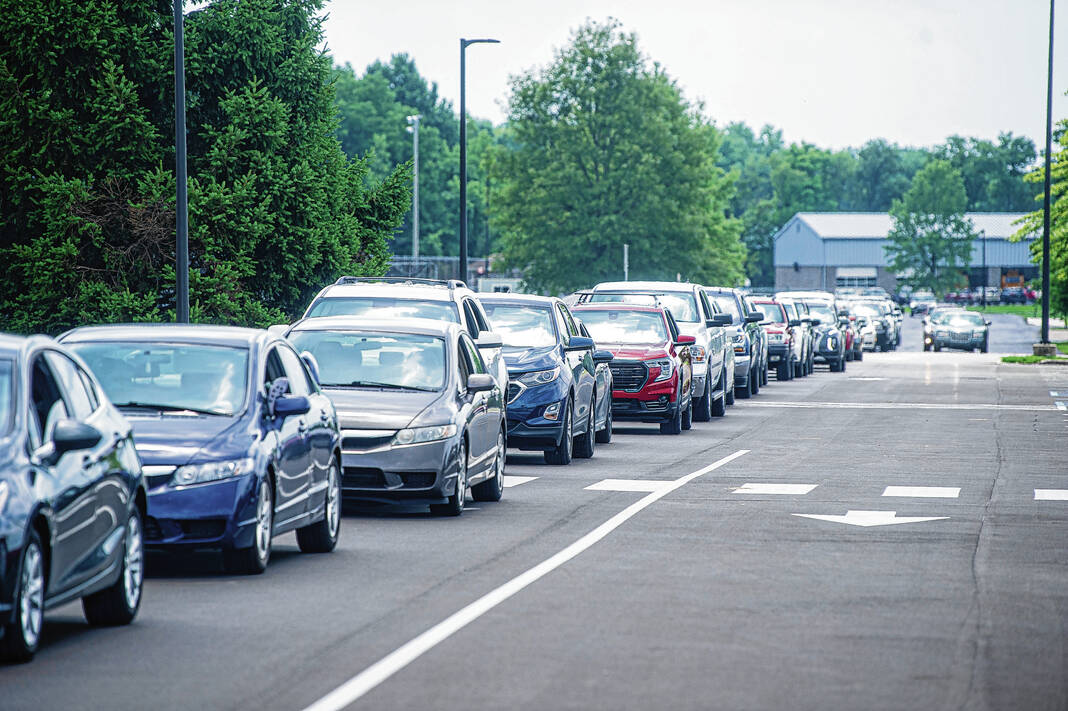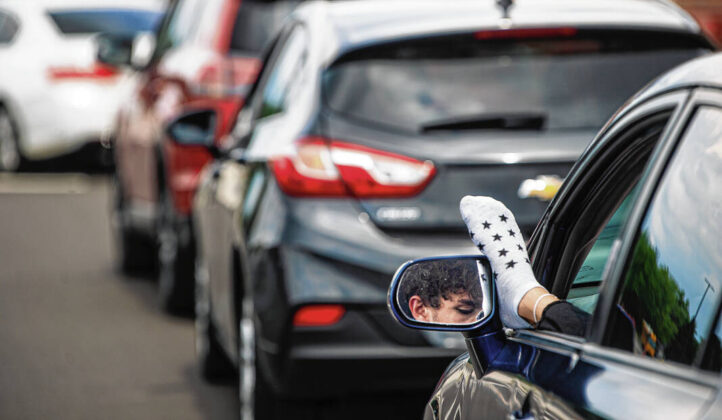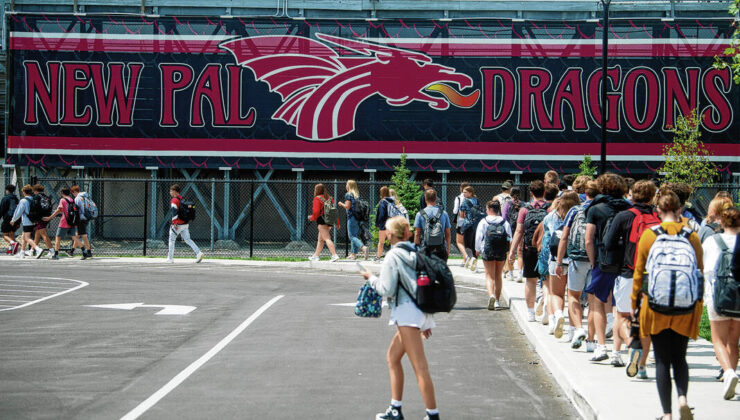HANCOCK COUNTY — Earlier this week, on a rainy Tuesday morning, officials at New Palestine High School had their hands full and then some. Close to 300 parents opted to drive their students to school for drop-off. Couple that with over 250 student drivers, an estimated 85 cars driven by faculty and staff, and dozens of buses all converging into the parking area at the same time, and it made the drop-off as well as the pick-up area a bit of a nightmare for officials trying to keep everyone safe.
“It’s just such a huge volume of cars all at once,” district community and public relations director Wes Anderson said.
School drop-off and pick-up lines do not move quickly anywhere in the county, officials say. It takes extra personnel and some creative route designing to make sure lines are set up and running as smoothly as possible. When parent drivers or teens driving themselves break line rules, school parking lots can become dangerous. Countywide, district officials want all drivers to be mindful and patient if they choose to drive their children or let their children drive to and from school this year.
Things have become so congested these first few weeks at NPHS — particularly during drop-off time — that the district announced starting Monday, Aug. 15, they’ll have a second drop-off area coming off the backside of NPHS via Bittner Road, giving parents a chance to drop off their kids by the pool entrance as well as the main door entrance.
“It’s all about acclimation,” Anderson said. “Each year we have a brand new set of parents who are trying to learn the route and it just takes a lot of time.”
Anderson admits the issue is more of a numbers and not an engineering issue at NPHS. They have nearly 250 vehicles driven by guardians dropping off kids daily at NPHS. That does not include hundreds of student drivers or the 36 buses exiting the bus garage, all using the same two-lane roads and all eventually heading to the same area for drop off.
“The funnel gets real small and we get real busy and things get slowed when people don’t follow the rules or stop to ask questions,” Anderson said. “It’s never going to be a 10-minute process and people need to accept that.”
While pick-ups tend to run a little smoother because many kids stay at school after classes for extracurricular activities, it’s not uncommon to see cars start to pile into district parking lots several hours before pick-up looking for the prime pick-up spots, and that too creates congestion, officials said.
“We want to keep everyone safe, and I tell parents all the time we design our parking lots for the safety of our kids and not their convenience,” Anderson said. “We don’t want any kids to ever have to dodge cars.”
Several years ago, Steve Satterly, who was at one point the SH district’s director of transportation and safety, was hit by a driver while he was directing traffic at a drop-off and pick-up line at the old Doe Creek Middle School campus. Fortunately, he didn’t suffer any major injuries. Still, district officials say even one minor incident years ago is too much.
Officials at Eastern Hancock, where they have some 35% of transfer students who can’t ride buses and must drive or be dropped off, say they too deal with high congestion and traffic issues on a daily basis.
“It’s a nightmare, but it’s an organized nightmare,” superintendent George Philhower said. “If you think of where we are located, we’re on the way to nothing — we’re at a T-intersection, so we end up with cars out on the road clogging things up because the lines get really long.”
Eastern Hancock is unique in that all three of their schools are located in one main campus, meaning everyone — students, teachers, staff, buses and parents — are all heading to one place at about the same time.
“We do get some long lines that do kind of make for a crazy experience,” Philhower said.
The district does have three different drop-off spots. One for the elementary, one for the middle school and yet another for the high school. Their pickups, however, all happen at the front of the schools.
“It does get a little more crowded there,” Philhower said.
The key to making drop-off and pick-up lines work, officials say, is making sure parents, student drivers, teachers and staff all follow the proper directions.
“That’s a huge thing,” Philhower said.
He too noted their staff works extra hard to keep things running as smoothly as possible and making sure everyone knows how the lines are supposed to run is the key.
“It really is a work of art watching our people who coordinate it all every day,” Philhower said.
Greenfield-Central High school principal Jason Cary told the Daily Reporter, so far this year, things have been pretty smooth at the high school when it comes to drop-off and pick-up lines.
“Sometimes it does get a little crowded, but nothing out of the ordinary,” he said.
Cary did note when the construction project on their new auditorium is scheduled to begin next month, he fears the work will create some issues in their parking lots and lead to even more congestion.
“That will have a significant impact on our traffic and parking,” Cary said. “We have worked with the engineers to troubleshoot some ideas, but we really will have to wait and see the impact of the project before we make any adjustments.”
Dave Merica, Mt. Vernon’s assistant director of transportation and school safety, said after being in school for over two weeks now, the traffic flow at their schools is really rolling pretty good and students are getting to class on time.
“We keep our student and parent drivers as a separate traffic flow from our buses,” Merica said.
He noted the partnerships they have with the local police departments are integral to maintaining fluidity on their campuses, and they are truly grateful for the assistance of the officers at the McCordsville Police Department, Fortville Police Department, and the Hancock County Sheriff’s Department.
With 42 buses running elementary and secondary routes, Merica estimated an average of 60 students on a bus, meaning they bring in about 55% of their student population, a fairly high number, which does mean fewer cars into parking lots.
“We also utilize our staff to help monitor the new hawk lights on N200W in Fortville to ensure our students are safe crossing the street,” he said. “Safety is and always will be our first priority.”







